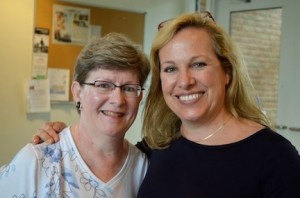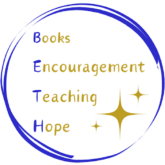
Photo copyright Star Black, 2012
This continues the serialization of an oral interview I did with Emma Walton Hamilton, founder of the Children’s Book Hub, for the Hub on January 8, 2013. Today we’re learning about Emma’s background and training in the theatre.
From the “Meet Emma” page on Emma’s website: Emma worked as an actress in theater, film and television for ten years before turning her attention towards directing, producing, educating and writing. She was a faculty member at the Ensemble Studio Theater Institute, and later became one of the founders of Bay Street Theatre in Sag Harbor, New York. She served as Bay Street’s Co-Artistic Director for thirteen years, then chose to focus her energies on the Theatre’s educational and young audience outreach as Director of Education and Programming for Young Audiences until 2008.
She has co-written lyrics for several songs, including “The Show Must Go On” recorded by Julie Andrews, and “On My Way” recorded by Laughing Pizza, and selections of her poetry are included in Julie Andrews’ Collection Of Poems, Songs And Lullabies. Emma and her mother also completed stage and symphonic adaptations of Simeon’s Gift, which was developed at Bay Street Theatre and went on symphonic tour to venues including the Hollywood Bowl, Atlanta Symphony and the O2 Arena in the UK under the banner of Julie Andrews’ Gift of Music.
Emma is a member of the Author’s Guild, The Dramatists’ Guild, The Society of Children’s Book Writers and Illustrators, the International Reading Association, SAG, AEA, AFTRA and ASCAP. She has served on the theater panel for the New York State Council on the Arts, as a National Ambassador for The Broadway League’s “Kids’ Night on Broadway”, and as a trustee for the Morriss Center School in Bridgehampton, NY, and the Center for Therapeutic Riding of the East End (CTREE). An accomplished public speaker, Emma addresses arts and literary conferences, schools, universities and other groups on a regular basis about the value of, and synergy between, the arts and literacy.
And now to today’s excerpt from the interview:
BETH: You mentioned some of your career paths, and I would like to go back to that a little just to give us a more in depth look at how you developed from theater to writing. Did you major in theater in college? Were you always planning to be in the theater world? Be an actor or director? Give us an idea of where you’ve been and how you got to where you are.
EMMA: Okay. As you know all my entire extended family was and is in the arts, most of them in theater in one form or another, my mom being a performer and my dad being a production designer for theater and film, and my stepfather being a film director and screenwriter and my stepmother being a children’s book author (interestingly enough) at one point in her life, but also a screenwriter. And so I think I grew up with this sense that it was expected that I would do that as well. I’d do something to do with theater and/or film.
I was more drawn to theater than film. I guess seeing both of them as a child growing up, I felt the magic of theater more than I felt drawn to film. Film, for me, was a lot of sitting around on sets and waiting for something to happen. It wasn’t like I was watching movies and saying “I want to do that,” I was sitting on the film sets and saying, “Nothing’s happening! What’s taking so long? Whereas theater seemed more magical, more immediate, more exciting to me, and I initially thought I wanted to act. Again, because I thought that was what was expected of me. So yes, I did a lot of acting in high school and majored in theater in college, and went to Brown University. I didn’t graduate from there, however, because I was frustrated by the fact that at the time they were very keen to give – which in retrospect I think is smart – but they were keen to give their students a wholistic education; they didn’t want people narrowing their focuses too much in the beginning, so for two years they wanted us to not do theater or acting. I muddled through that, and the classes were wonderful. I’m proud to say I was in acting classes with John F. Kennedy, Jr. and did several scenes with him! It was an amazing time. But I had just recently moved to New York City during my senior year of high school before I went to college, and I had really begun to discover all the joys of what living in New York could be if you were a theater person. I longed to go back there, and Providence, Rhode Island, which is where Brown is, couldn’t hold a candle to New York at the time – although it is a bustling town now.
So I left, and I came back to New York and enrolled at HB Studio in Greenwich Village, run by Herbert Berghof and Uta Hagen, the great acting teachers, and I studied with both of them there for several years. I consider those to be my formative years of training in the theater. I did a number of productions down there, then took some directing classes at Playwright’s Horizons and became a member of a developmental theater called Ensemble Studio Theater, in New York City, where one of the privileges of membership is that you can initiate your own projects. You can, by virtue of your membership, bring them a play you would like to explore and you can sign up to utilize the theater space and put together a production. I started dabbling in producing that way, and that’s where I met my husband.
He and I were cast in a play together. At the time I was acting, directing, and producing, and we started teaching together a little bit. Somewhere along the way we were coming out to Sag Harbor quite a bit because my father had a home there and we were spending weekends here and dreaming about how much we love Sag Harbor and wouldn’t it be wonderful to do a theater in Sag Harbor instead of New York City. That’s what led to us founding our own theater here, which is the Bay Street Theatre here in Sag Harbor.
BETH: I can certainly understand the appeal of Sag Harbor.
EMMA: It was wonderful; this was over 20 years ago, and there was very little happening culturally in terms of the performing arts, other than community theater. The John Drew Theater in East Hampton was more or less a presenting house at the time and wasn’t producing original work at all, so that’s what we started doing at Bay Street – producing original work as much as we could. We built the theater and ran it there for 17 years.
As I said, at a certain point Steve and I had children, 16 years ago now, and my focus shifted. I started writing with my mom and really becoming much more interested in working with kids, for kids, writing for kids and teaching kids, and so forth. I was running the educational outreach program at Bay Street. I did that for several years. I was teaching playwriting to kids in area schools, which is all the same principles. It’s still about character and conflict and scenes, first act, second act. It’s all the same – it’s just a different medium. When we left Bay Street a couple of years ago, in 2008, my real focus had become writing children’s books, and I had been invited by Stony Brook Southampton’s MFA in Creative Writing program to come and teach occasional classes over there and to lead a workshop during their summer conference. They had just started a children’s literature conference as part of the program there, at the Writers’ Conference in the summer, so I was already teaching there part time, and when we left Bay Street they invited us to come there full time, to start a playwriting conference – and not long after that asked me to take over the children’s lit conference and all the aspects of children’s literature programming. So for the last four years I’ve been 100% full-on “children’s literature is my life,” and theater has become the sole purview of my husband in our family. This is a very happy place for me to be.
BETH: And you are certainly using all that you’ve learned over the years.
EMMA: Yeah, there is so much synergy. Story telling is story telling, whether it’s on stage or in a book. It’s just understanding the medium and knowing how to work within its limitations or structure.
NOTE from Beth: If you are interested in attending the Stony Brook Southampton Children’s Literature Conference, I encourage you to send in your application. Note that Emma herself is teaching the Picture Book workshop. There are only twelve participants in each workshop, so it is an intense, person-to-person way to learn. I attended last year, and it was an excellent learning experience, as well as being an amazing confidence booster. To see my post about last year’s experience, click here.
Next week, we’ll learn how Emma’s writing segued into editing.

Love this, Beth and Emma. What a grand life it is writing for children. And storytelling IS storytelling. It’s good to read our stories aloud, acting the parts out, if you will. That is as valuable a writing tool as any writing book, picture book dummy, or class we can take. Thanks y’all! 🙂
Thank you Robyn — what a fantastic comment. Right on!
Very fun interview! I’m wondering what it was like for Beth to see her mom in so many movies and acting roles!
oops–sorry Beth. disregard my mistake. I’m wondering what it was like for EMMA to see her mom in movies and so many acting roles!
What a great answer! 😀
I enjoyed reading the interview after listening to the live teleseminar. After osbserving Emma in action, she really has found a happy place for herself. She knows the world of storytelling and publication. I attended Southamptom Stony Brook Children’s Litereature Conference last summer and Emma has created a wonderful and varied program! it is an excellent opportunity to really hone your writing skills. I encourage people to consider attending because it is such a hands-on experience and classes are so intimate. If you are unable to attend, I also highly recommend “Just Write for Kids,” because it’s a quality college-level writing course on-line, based on Emma’s year’s of teaching writing to students. And, you can do it at your own pace.
Great interview. Look forward to the remainder of the series.